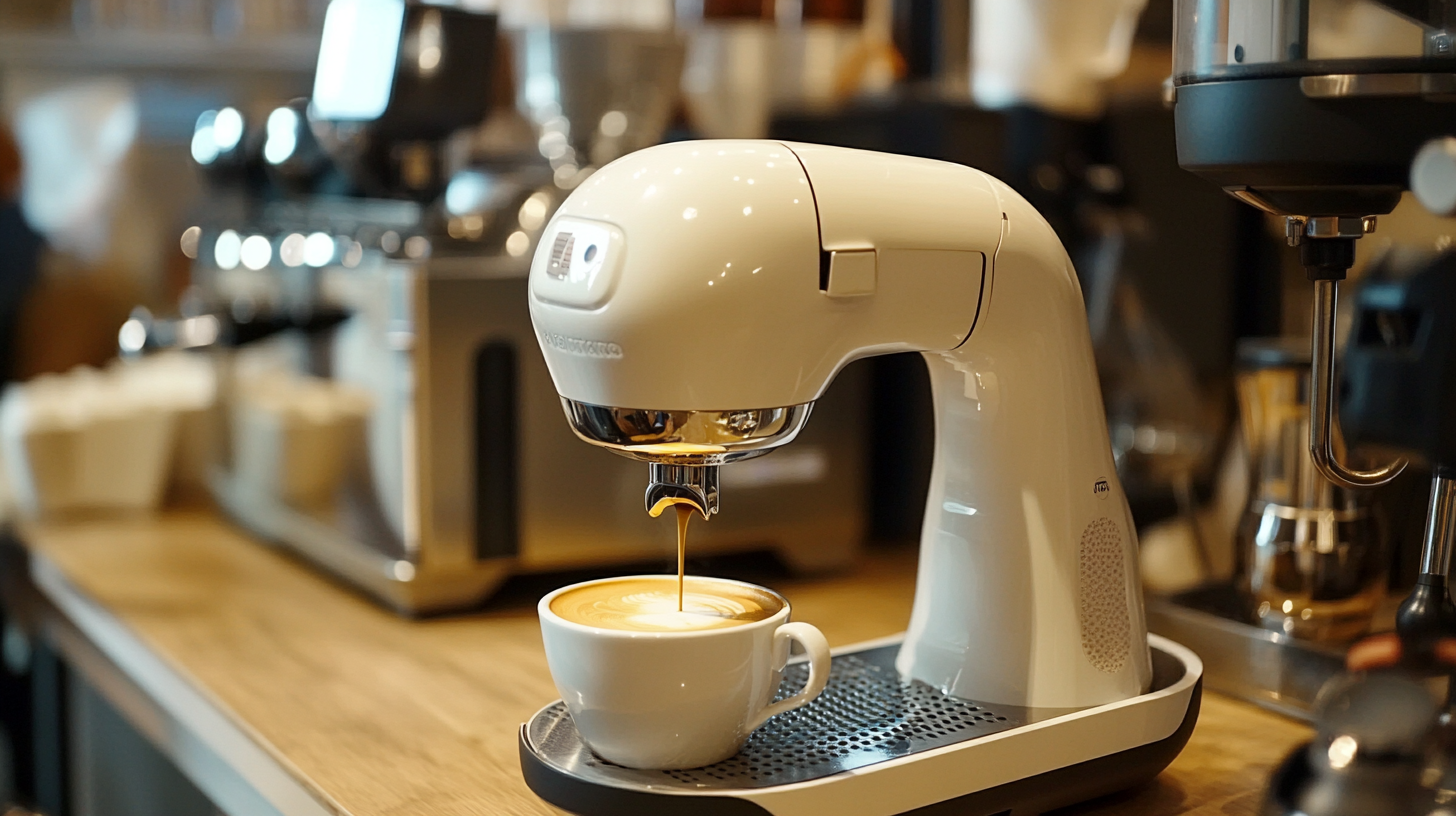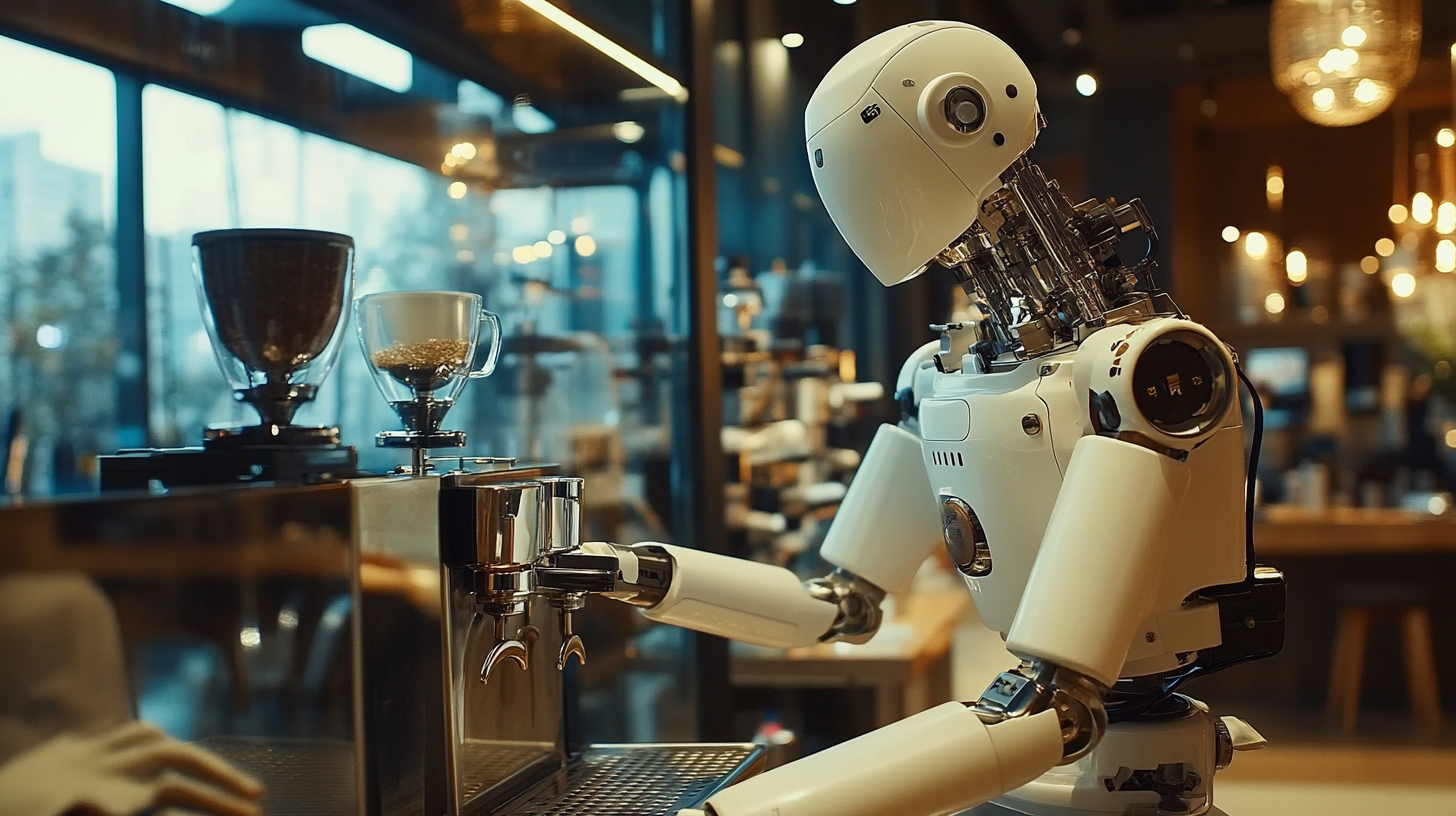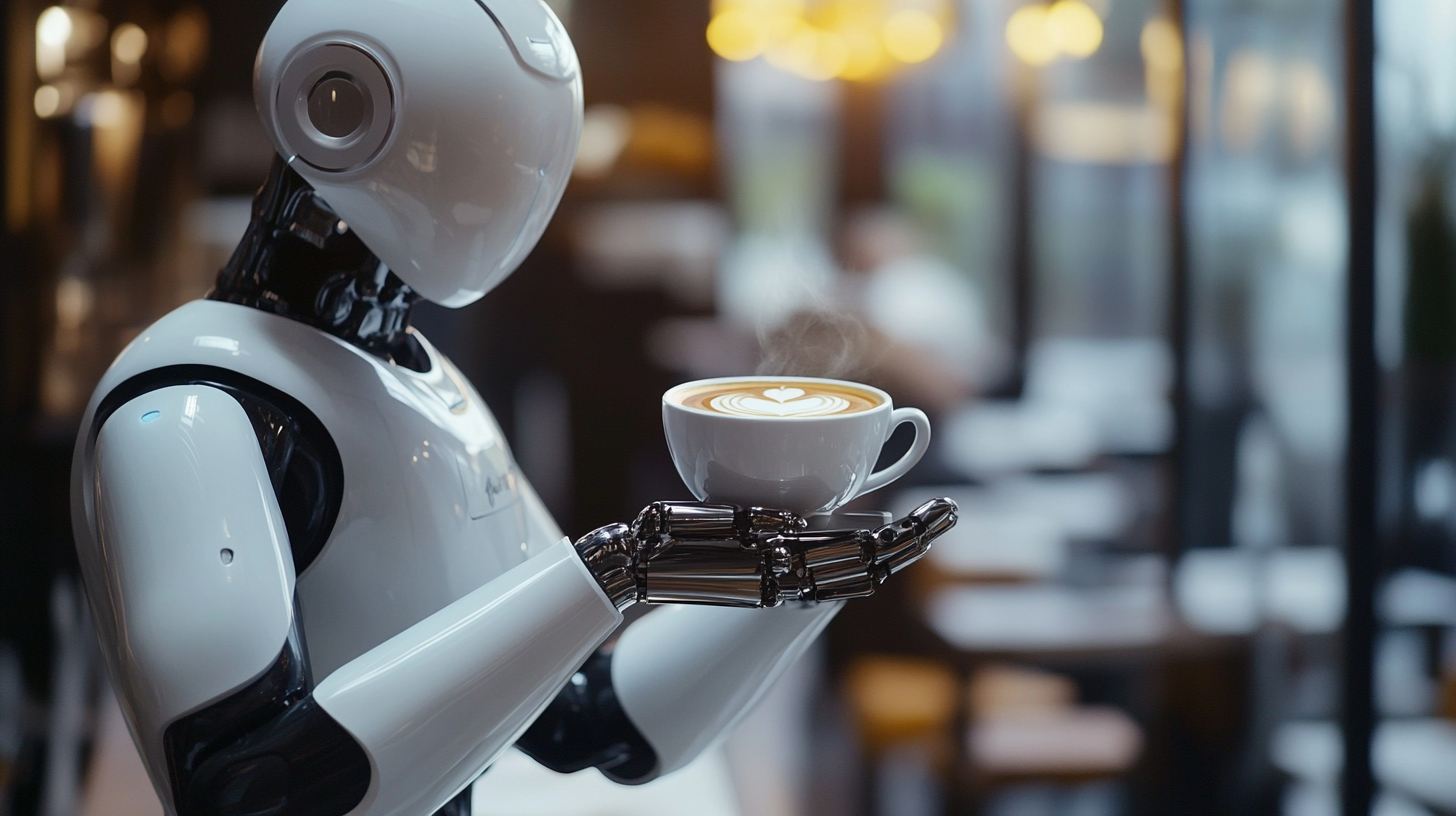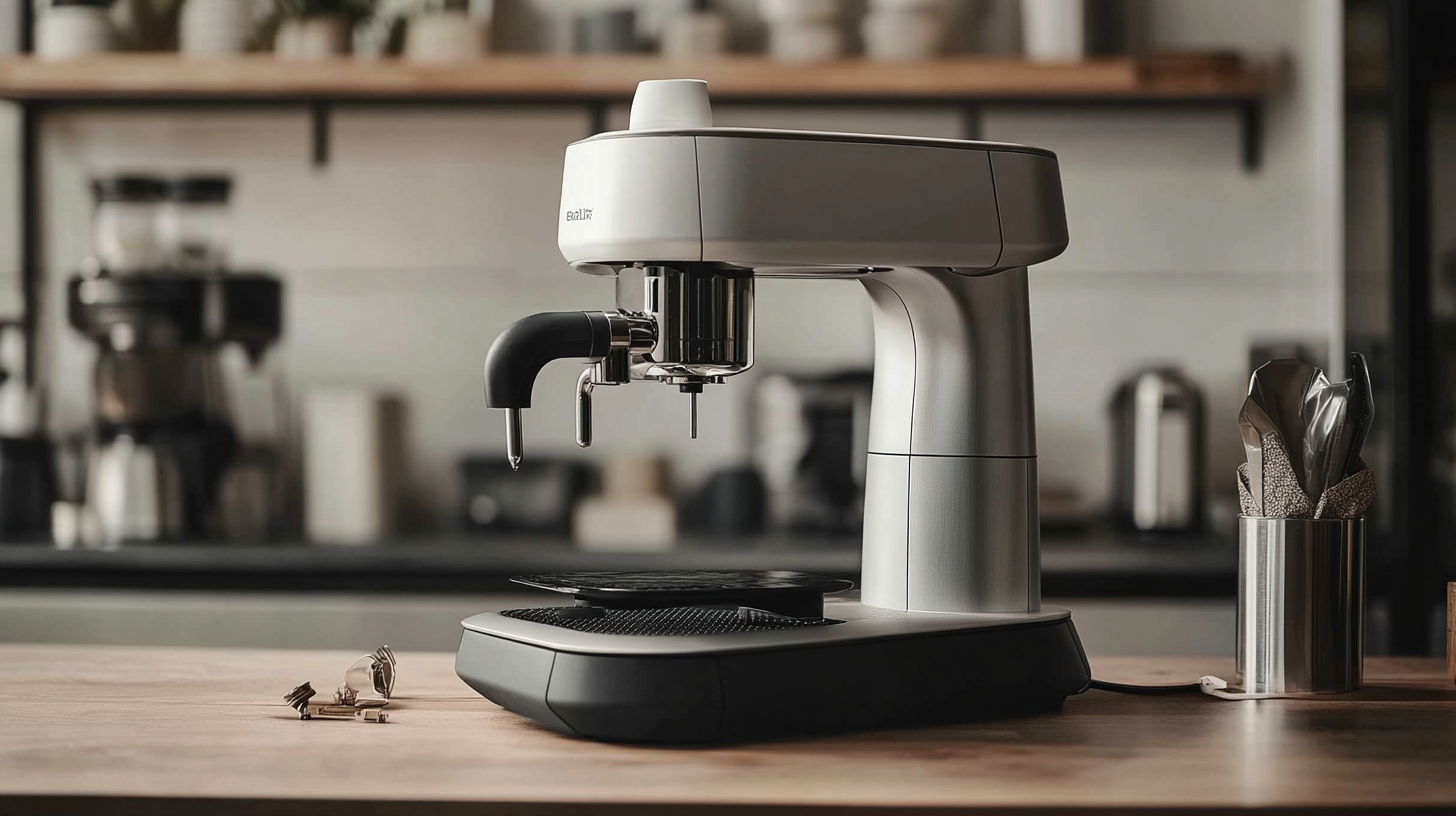Finding the Best Coffee Robot Barista: A Comparative Guide to Top Manufacturers Worldwide
In recent years, the coffee industry has experienced a significant transformation, with the emergence of innovative technologies redefining the way consumers enjoy their favorite brews. One such innovation is the Coffee Robot Barista, which combines automation and artificial intelligence to deliver a personalized coffee experience. According to a report by MarketsandMarkets, the global coffee machine market is projected to reach $4.4 billion by 2026, showcasing a growing demand for advanced coffee-making solutions. This shift toward automation not only enhances efficiency in coffee shops but also caters to the ever-evolving preferences of coffee enthusiasts around the world.
The rise of the Coffee Robot Barista indicates a broader trend in the beverage industry, where convenience and quality are paramount. A study conducted by Allied Market Research suggests that the robotic coffee machine market is expected to grow at a compound annual growth rate (CAGR) of 15.6% from 2021 to 2028. This comparative guide aims to explore the top manufacturers of Coffee Robot Baristas globally, examining their unique features, technological advancements, and contributions to the coffee culture. By understanding the landscape of Coffee Robot Barista options, consumers and businesses alike can make informed decisions that align with their needs and preferences.

Understanding the Coffee Robot Barista Market: Current Trends and Growth Projections
The coffee robot barista market is witnessing significant growth driven by rising consumer demand for convenient and efficient coffee-making solutions. According to a market research study by Custom Market Insights, the Global Fully Automatic Coffee Machine Market is projected to reach USD 7.08 billion by 2033, growing at a compound annual growth rate (CAGR) of 4.06%. This growth is representative of a broader trend within the coffee machine sector, which highlights the increasing preference for fully automated systems among consumers and businesses alike. Furthermore, the Global Coffee Machines Market is also on an upward trajectory, with an expected increase from USD 7.9 billion in 2022 to over USD 11.4 billion by 2032, marking a CAGR of 3.74%. As preferences shift towards specialty and high-quality coffee experiences, manufacturers are innovating to meet these demands, contributing to a notable surge in specialty coffee shop markets, projected to grow at a CAGR of 13.02% by 2026. China's coffee market is particularly noteworthy, reflecting a spectacular growth rate of 31% in 2021, with expectations of a CAGR of 9.63% in the upcoming years. This growth highlights the increasing coffee consumption trends that are not only localized to traditional markets but are expanding globally, emphasizing the potential for coffee robot baristas to capture a significant share of this evolving landscape.

Key Players in the Coffee Robot Barista Industry: A Spotlight on Leading Manufacturers
As the coffee culture continues to evolve, the introduction of coffee robot baristas has revolutionized the way coffee lovers experience their favorite brews. This technological advancement has led to an array of manufacturers stepping into the spotlight, each offering unique innovations that cater to a diverse range of preferences and demands.
Among the key players in the coffee robot barista industry, companies like CafeX, Robotic Coffee, and BaristaBot have garnered significant attention. CafeX, for instance, seamlessly blends high-tech robotics with the art of coffee making, delivering an exceptional experience through its precision brewing techniques. Their robots, equipped with advanced AI, can tailor drinks to individual specifications, ensuring a personalized touch for every customer.
Meanwhile, Robotic Coffee focuses on enhancing operational efficiency within coffee shops. Their systems are designed to mimic the skills of a human barista, maintaining quality while significantly reducing waiting times. This emphasis on speed and efficiency is particularly appealing for busy urban environments where time is of the essence.
BaristaBot, on the other hand, has committed itself to creating an interactive experience. By integrating touchscreens and user-friendly interfaces, they allow customers to engage directly with the coffee-making process, fostering a connection that traditional systems may lack. This dedication to user experience positions BaristaBot as a unique contender in a rapidly evolving market.
With each of these manufacturers pushing the boundaries of what a coffee robot barista can offer, consumers are now privy to a world of innovations that promise not just convenience but an overall enhanced coffee experience.

Technologies Behind Coffee Robot Baristas: Innovations Driving the Market
The coffee industry is witnessing a remarkable transformation with the advent of innovative technologies driving the market for coffee robot baristas. As noted in recent market research, the Global Fully Automatic Coffee Machine Market is projected to reach an impressive USD 7.08 billion by 2033, growing at a CAGR of 4.06%. This surge in demand is largely credited to advancements in automation and artificial intelligence, which enhance the consumer experience while optimizing operational efficiency.
Among the groundbreaking developments is the introduction of unmanned coffee shops, exemplified by the launch of the world’s first robot drive-thru store. This pioneering concept not only redefines convenience for coffee lovers but also underscores a broader trend towards automation in retail. By leveraging sophisticated robotics and machine-learning algorithms, these establishments can serve quality coffee with minimal human intervention, reflecting changing consumer preferences for speed and efficiency.
Meanwhile, the specialty coffee segment is also evolving, propelled by innovations in grinder technology. With precision engineering and ergonomic designs, modern grinders are enabling baristas to maximize flavor extraction and consistency, thereby enhancing the overall coffee experience. As these technologies unfold, they not only cater to the traditional market but also appeal to the growing segment of ready-to-drink coffee enthusiasts, especially in regions like Asia-Pacific, where sustainability and convenience are becoming essential consumer drivers.

Comparative Analysis: Performance Metrics of Top Coffee Robot Models
In recent years, the rise of coffee robot baristas has transformed the landscape of coffee preparation, promising consistent quality and innovative experiences. A comparative analysis of the leading coffee robot models uncovers critical performance metrics that can guide consumers and coffee shop owners in making informed decisions. Industry reports indicate that brands like Flippy and BaristaBot have made significant strides, with Flippy outperforming competitors in speed, completing an espresso preparation in an average of 30 seconds, as opposed to the industry standard of 45 seconds.
Precision in brewing—measured through factors like temperature control and pressure consistency—is paramount to achieving the perfect cup. The Maxim S model has been noted for its advanced temperature regulation system, maintaining an optimal brewing temperature within 0.5 degrees, which is a significant improvement over other models that may fluctuate up to 2 degrees. A study by the Coffee Innovation Institute highlighted that precision in brewing temperature can enhance extraction quality by up to 15%, emphasizing the importance of choosing a robot that excels in this area.
Additionally, user interface and adaptability to different coffee types have emerged as critical metrics for performance. The latest market analysis shows that models equipped with intuitive touch screens and customizable profiles—like the CoffeeBot 3000—are gaining traction. Their user-friendly software has reportedly increased customer satisfaction scores by 20%, indicating a strong preference for convenience among consumers. As the demand for automated coffee solutions continues to grow, these performance metrics will be key indicators in assessing the best coffee robot barista on the market.
Consumer Preferences and Feedback: Insights from Coffee Lovers on Robot Baristas
In the evolving world of coffee, robot baristas are carving a niche, garnering the attention of coffee lovers worldwide. As the technology behind these machines advances, consumer preferences are increasingly shaping the market. Coffee aficionados appreciate not just the convenience, but also the consistency and quality that a robot barista can offer. Feedback from users emphasizes the desire for customizable brewing options that mimic café experiences without the mystery of human artistry. The integration of features that allow for personal settings has become a strong selling point, making these machines appealing for those who want to explore their palates.
In the midst of this revolution, companies like Barista Coffee are taking significant steps to enhance home brewing experiences. Their introduction of premium coffee capsules and machines designed for café-quality brewing signifies a pivotal shift. The Coffee Brewing Control Chart, utilizing TDS (Total Dissolved Solids) and solute extraction metrics, is setting new standards for brewing precision. This innovation not only empowers everyday coffee lovers to achieve barista-level results but also complements the rising trend of home coffee brewing. Consumers are actively sharing their satisfaction, pointing out how these advancements bring the café right into their kitchens, allowing for enjoyable experiences and expertly brewed cups, tailored to individual tastes.
As feedback continues to flow in, it’s clear that the landscape of coffee preparation is transforming. The rise of robot baristas alongside home brewing innovations reflects a broader movement towards personalization and quality in coffee. With such options readily available, coffee lovers are finding joy in both the technology and the flavor profiles they can achieve at home.
